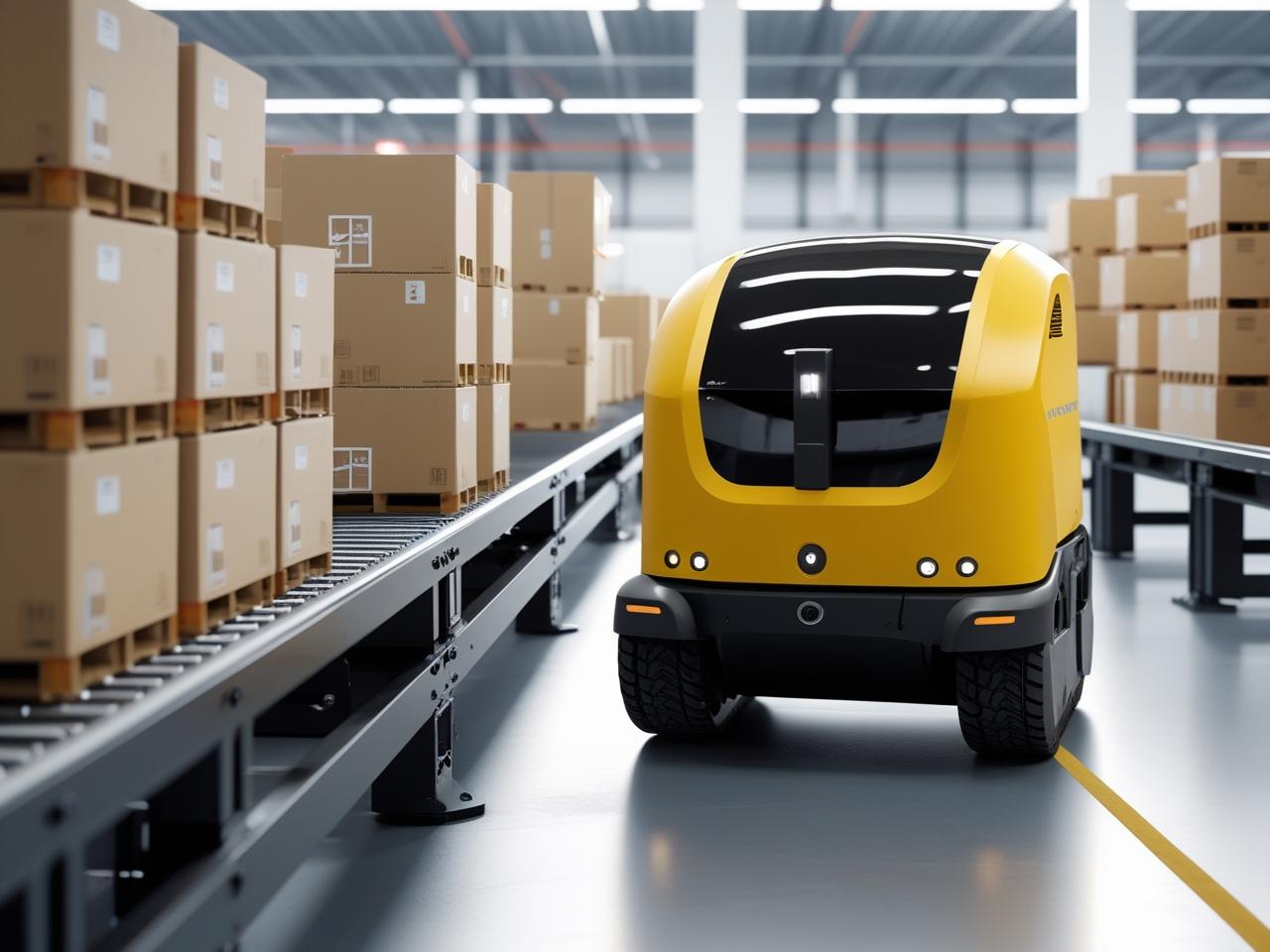
Understanding the Different Types of Automated Guided Vehicles (AGVs)
As automation reshapes modern warehouses, factories, and distribution centers, automated guided vehicles (AGVs) are becoming essential tools for moving materials efficiently, safely, and cost-effectively. From simple tow tractors to advanced autonomous mobile robots (AMRs), AGVs now come in a wide range of configurations designed for specific industrial tasks.
For engineers and procurement teams developing or sourcing AGV platforms, it’s crucial to understand the different types of automated guided vehicle systems—and the components that make them work.
Here’s an overview of the major AGV types, how they function, and what they require under the hood.
Tugger or Tow AGVs
Tugger AGVs are designed to pull carts or trailers loaded with materials. These AGVs follow fixed paths using magnetic tape, wires, or more advanced navigation systems. They’re common in automotive and manufacturing environments where large volumes of material need to be moved repetitively over long distances.
Key Component Requirements:
- High-torque BLDC motors for pulling heavy loads efficiently
- Durable wheel hub motors for traction and reliability
- Long-life miniature ball bearings to reduce friction and wear in drive systems
Unit Load AGVs
These vehicles carry discrete loads on their platform, such as pallets, containers, or totes. They’re typically used in warehouse environments to move materials between storage and production areas.
Unit load AGVs often incorporate lift mechanisms, adding complexity to the motor and sensor systems.
Key Component Requirements:
- Compact frameless BLDC motors to power lift or tilt functions
- Force sensors for safe payload detection and alignment
- Lithium-ion battery ICs for power monitoring and thermal management
Forklift AGVs
Forklift-style AGVs automate traditional pallet-handling tasks without a human driver. These systems are increasingly used in high-throughput warehouses, particularly where labor costs are rising or skilled operators are in short supply.
Forklift AGVs must detect pallet position, adjust lift height, and navigate safely among humans.
Key Component Requirements:
- Robust BLDC motors with fine speed control
- DC axial fans for cooling high-current electronics and motors
- Strain sensors for handling precision
Autonomous Carts
These are smaller, more flexible AGVs used to move lightweight items in healthcare, hospitality, and micro-fulfillment environments. Autonomous carts often rely on natural feature navigation or SLAM (Simultaneous Localization and Mapping) instead of fixed-path guidance.
Their compact design calls for equally compact components with low noise and power draw.
Key Component Requirements:
- Silent-running miniature ball bearings and low-noise BLDC motors
- Efficient battery ICs to extend runtime
- Precision force sensors for adaptive payload handling
Assembly Line or Work-in-Progress (WIP) AGVs
These AGVs are integrated into assembly lines to move products between stations. They are built for precision, synchronization, and safety, often stopping automatically at specific stations to allow for operations such as inspection or assembly.
Key Component Requirements:
- Position-sensing BLDC motors for motion synchronization
- Responsive force sensors for station detection
- Effective thermal management in compact environments
Designing for the Right AGV Type
Each AGV type places different demands on its components, from motor torque and speed profiles to thermal constraints and sensing accuracy. When designing or sourcing an AGV platform, it’s important to select suppliers who understand these technical nuances and can offer tailored solutions—not just catalog components.
For instance, high-precision load cells may be essential for lift-assist AGVs that require accurate weight detection to ensure stability and safety, while more rugged load cells may be necessary for tugger AGVs operating in harsher environments. Just as with other components, load cell performance must align with the vehicle’s load profile, duty cycle, and required measurement sensitivity. Similarly, ball bearing performance and thermal protection must be matched to the vehicle’s load profile and duty cycle.
Final Thoughts
The types of automated guided vehicle systems in today’s market are as diverse as the industries they serve. From lightweight autonomous carts to heavy-duty tow vehicles, the right AGV design starts with the right foundation—precise, efficient, and application-specific components.
Whether you’re engineering the next breakthrough in warehouse robotics or sourcing critical components for a current build, choosing the right partners and parts will drive long-term performance and reliability.
Looking for reliable AGV components? From motion control to thermal management and sensing, we offer proven solutions for every AGV type—optimized for compact spaces, high duty cycles, and demanding industrial conditions.

